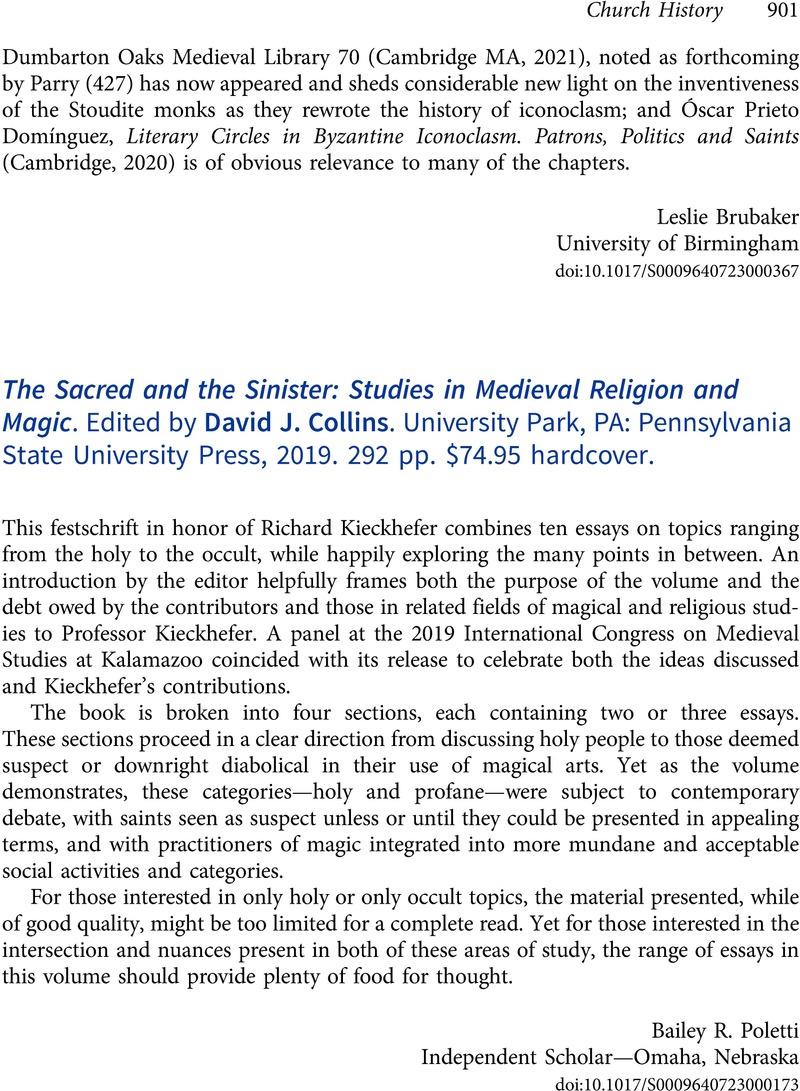No CrossRef data available.
Article contents
The Sacred and the Sinister: Studies in Medieval Religion and Magic. Edited by David J. Collins. University Park, PA: Pennsylvania State University Press, 2019. 292 pp. $74.95 hardcover.
Review products
The Sacred and the Sinister: Studies in Medieval Religion and Magic. Edited by David J. Collins. University Park, PA: Pennsylvania State University Press, 2019. 292 pp. $74.95 hardcover.
Published online by Cambridge University Press: 03 May 2023
Abstract
An abstract is not available for this content so a preview has been provided. Please use the Get access link above for information on how to access this content.

- Type
- Book Reviews and Notes
- Information
- Copyright
- Copyright © The Author(s), 2023. Published by Cambridge University Press on behalf of American Society of Church History


